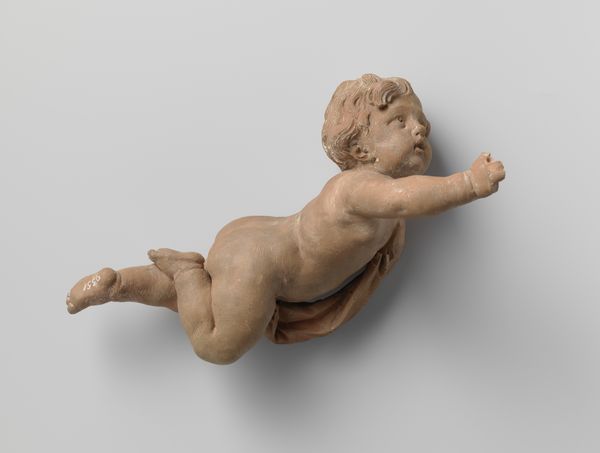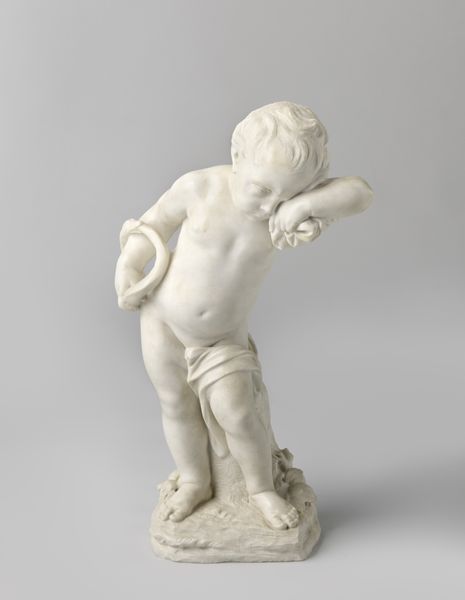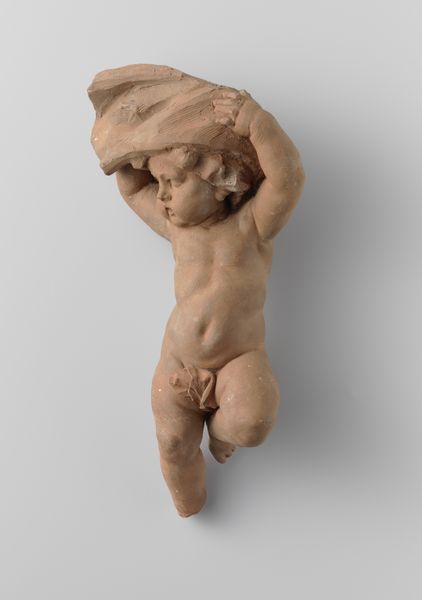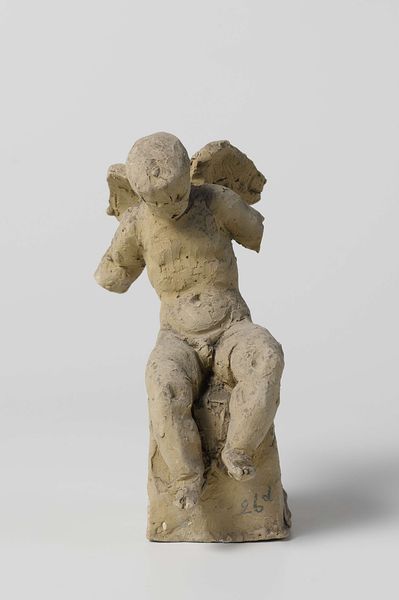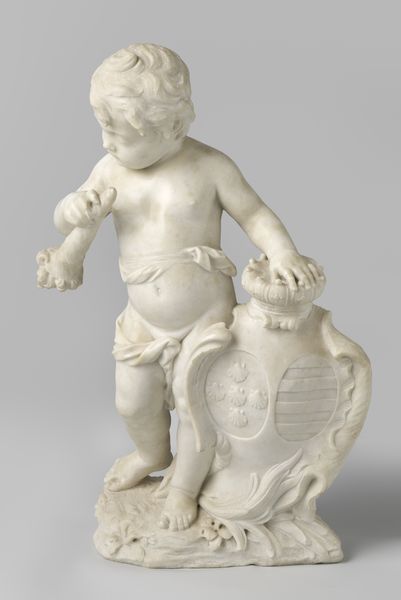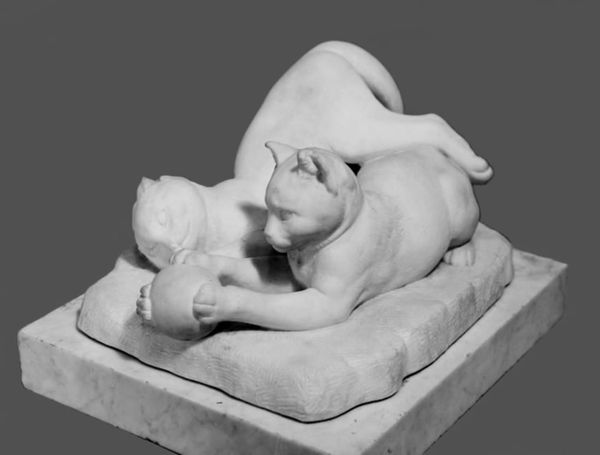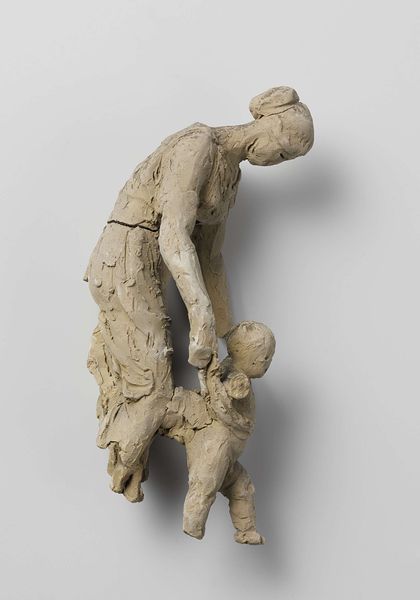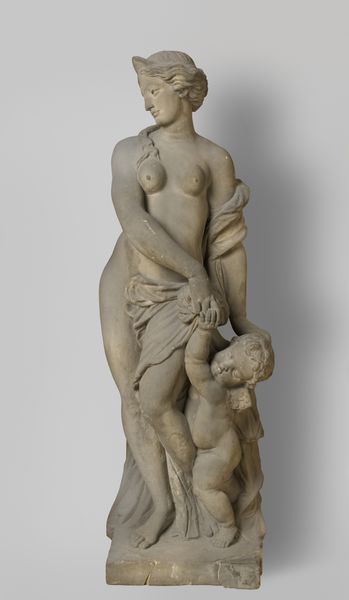
sculpture, terracotta
#
portrait
#
baroque
#
figuration
#
sculpture
#
terracotta
Dimensions: height 28.1 cm, width 15.7 cm, depth 15 cm
Copyright: Rijks Museum: Open Domain
Curator: The sculpture before us is "Study for a Hovering Putto" crafted from terracotta by Jan Baptist Xavery around 1735 to 1750. Editor: My first impression? The piece evokes a sense of precariousness and vulnerability. There's a tenderness in how the cherub clings to what appears to be a roughly shaped cloud. It’s rather heavy for something meant to float, both visually and perhaps thematically. Curator: Indeed, it’s a palpable, weighty portrayal. Putti, or cherubs, often symbolized divine love and beauty. However, the deliberate materiality, the raw terracotta, adds an earthly dimension. It challenges that weightlessness we might expect. It prompts us to think about how power operates to construct ideals, and it seems Xavery acknowledges these constraints with this sculpture. Editor: Absolutely. It also makes me think about access. Traditionally, baroque art, especially sculpture, often represented elitist institutions— the church and state. Yet this rendering, a preparatory study, feels so intimate, less grandiose, less…official. Curator: Precisely. The unfinished nature gives us insight into Xavery’s artistic process, pulling back the curtain, revealing that access wasn’t available to just anyone, and there are often material restraints within artistic institutions. Editor: And considering Xavery's role within these systems, that artistic labour becomes visible. The cherub's dependence on this roughly formed cloud also feels significant. Are we supposed to admire this display of faith? This vision feels rooted to earthly support systems and infrastructures. Curator: Baroque art very deliberately employs strategies to sway audiences, this piece is an interesting negotiation, that could very well question such strategies and accessibility, since putti generally encourage emotional and spiritual connections. The fact that this particular study is not in marble, for instance, complicates notions of divine intervention or grace. It offers instead a corporeal reality, which brings me back to your original point of its apparent fragility. Editor: Ultimately, the beauty here lies in Xavery's creation. We find ourselves reflecting not just on idealized concepts, but on our understanding of materiality, faith and institutions. Curator: An evocative, earthbound divinity. Food for thought about our relationships to these ethereal spaces.
Comments
No comments
Be the first to comment and join the conversation on the ultimate creative platform.
